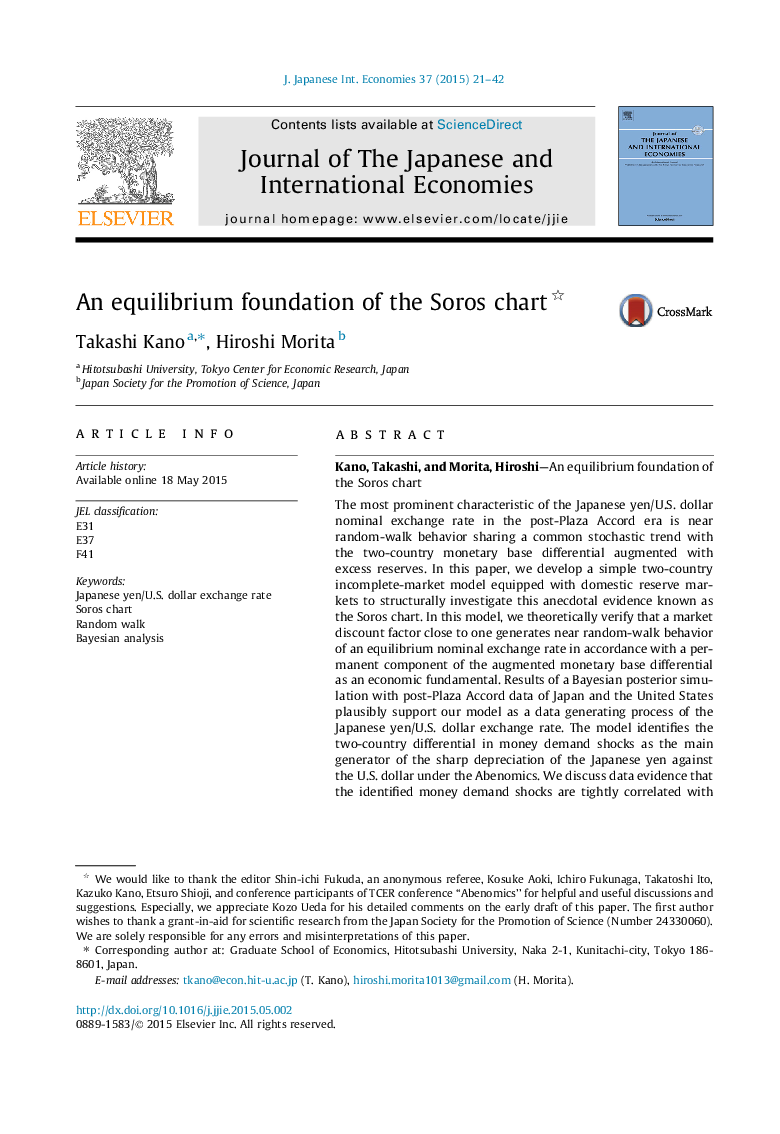| Article ID | Journal | Published Year | Pages | File Type |
|---|---|---|---|---|
| 964464 | Journal of the Japanese and International Economies | 2015 | 22 Pages |
•The paper mimics post-Plaza Accord sample moments of the Japanese yen/U.S. dollar exchange rate.•Sample moments include near random-walk behavior and the Soros charts.•We build a two-country dynamic stochastic general equilibrium model with reserve markets.•A Bayesian posterior simulation supports the model as a plausible data generating process.•The model fails to explain the sharp depreciation of the Japanese yen in the Abenomics.
The most prominent characteristic of the Japanese yen/U.S. dollar nominal exchange rate in the post-Plaza Accord era is near random-walk behavior sharing a common stochastic trend with the two-country monetary base differential augmented with excess reserves. In this paper, we develop a simple two-country incomplete-market model equipped with domestic reserve markets to structurally investigate this anecdotal evidence known as the Soros chart. In this model, we theoretically verify that a market discount factor close to one generates near random-walk behavior of an equilibrium nominal exchange rate in accordance with a permanent component of the augmented monetary base differential as an economic fundamental. Results of a Bayesian posterior simulation with post-Plaza Accord data of Japan and the United States plausibly support our model as a data generating process of the Japanese yen/U.S. dollar exchange rate. The model identifies the two-country differential in money demand shocks as the main generator of the sharp depreciation of the Japanese yen against the U.S. dollar under the Abenomics. We discuss data evidence that the identified money demand shocks are tightly correlated with longer-term interest rate differentials between the two countries.
